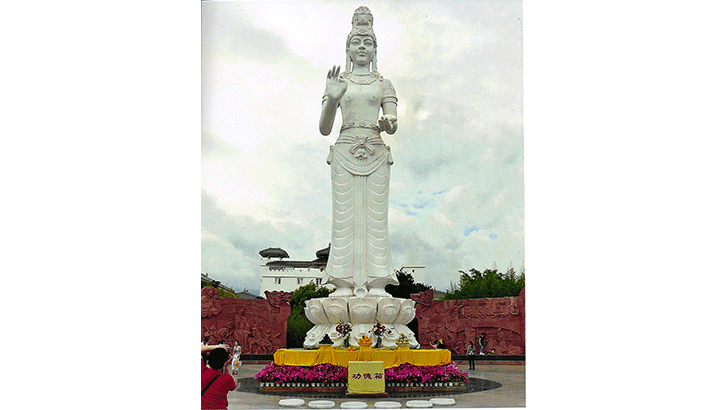Teaching the Moral Traditions of Others: Editor’s Introduction
Most Americans accept the notion that we should learn more about religious traditions other than our own (Wuthnow 2007). In our post-9/11 world, we recognize how difficult it is to comprehend fully the actions of religious people without understanding the impact their religious traditions have had on their motivations and behavior. One result of this new interest is that the comparative study of religion and religious ethics has become a critical part of today’s liberal arts education. A quick review of the Syllabus Project, a joint effort between the AAR and the Wabash Center for Teaching and Learning, reveals a plethora of courses dedicated to this task.
Of course, those in the field of religious studies in general, and in religious ethics in particular, have been making this claim for some time. The modern field of comparative religious ethics dates back to the founding of the Journal of Religious Ethics in 1973, whose purpose is to publish the very best work in religious ethics with an emphasis on comparative religious ethics. At the annual meeting of the American Academy of Religion, a group of ethicists, many of whom are associated with the JRE in the past and present, believed that the field of comparative religious ethics was too important to be left to the periodic panels and presentations of the AAR’s Ethics Section. They claim: “Indeed, comparative ethics may be desperately needed in our contemporary context of global interdependence, misunderstanding, and mutual mistrust. There are thus ample grounds, both social and purely intellectual, to suggest that this ethical variety needs to be engaged directly via rigorous comparison. Comparative ethics makes such diversity central to its analysis.” The AAR’s Program Committee agreed with their assessment, and thus a Comparative Religious Ethics Group has been part of the annual meeting since 2006.
While scholarship in comparative religious ethics is an important area of research, presentation, and publication for scholars of religion, an equally important task is the teaching of comparative religious ethics for many of the same reasons. The global citizens who will engage with one another economically, politically, and socially are our current and future students. To break down the walls of misunderstanding and to foster mutual trust among people of diverse religious, ethnic, and cultural backgrounds, it is imperative that scholars of religious ethics find ways to translate their research and scholarship into successful pedagogical strategies for our students. To its credit, the Comparative Religious Ethics Group is aware of the importance of this task and at the annual meeting in Baltimore in 2013 dedicated one of their sessions to the following theme: "Pedagogy and Comparative Religious Ethics: Teaching the Moral Traditions of Others." This theme is the focus of this issue of Spotlight on Teaching; most of the contributors were participants in that session.
One challenge for those who want to teach the moral traditions of others is deciding on the content for comparison. Do we teach the religious traditions and highlight and compare the moral frameworks embedded within? Or do we adopt an issues-based approach and illustrate how those are addressed within different religious traditions? The challenge for the latter approach is that students do not have the depth of insight into the traditions to achieve a full grasp on either the reasons for a tradition’s particular stance on a social issue or the diversity of perspectives within those traditions. Moreover, it is difficult to address the many ethical issues that confront us with much depth or substance. The challenge for the former approach is to attract the interest of students who want to see how religion is “relatable” to the ethical issues they deem important, especially in liberal arts contexts where courses in religious ethics are only one possibility for meeting a general education distribution requirement.
The authors in this edition of Spotlight understand these concerns regarding content and approach it in various ways. Rosemary Kellison, who writes about her efforts in a course on Islam, has chosen the traditions-based approach. She focuses on the broad theme of sexual ethics and explores with her students not only the multiple ways Islamic communities have addressed that theme but also puts it into the historical, political, and social contexts out of which the concerns associated with sexual ethics emerge. In this way, they have the tools to examine critically ethical arguments. Irene Oh agrees that to bring students to a point where they can understand and engage the religious traditions’ perspectives on ethical issues she must bring their knowledge of those traditions up to a satisfactory level. Only then can they meaningfully compare the traditions on important issues. In a similar vein, Nahed Artoul Zehr contends that understanding the evolution and practice of Islamic law can only occur by sustained focus on its nuances and complexity.
Steven Benko suggests that one way to enable students to become critical thinkers is by focusing upon a fundamental and powerful concept and using that concept for the basis of comparison. The term he chooses to use in his class is the term comparison itself. He asks students not only to define the term but to engage the religious traditions around that concept, noting similarities and differences. The result, he contends, is that students not only have a clearer sense of the comparisons but end up with a clearer sense of the study of religion, which is comparative by its very nature. As it relates to teaching the moral traditions of others, one could use a variety of ethical concepts, such as fairness, to enable students to get a better sense of the comparisons of different traditions.
This notion of using a single concept or issue as a basis of comparison is present in many of the essays in this edition of Spotlight. Oh’s focus on interfaith marriage is a way to engage students meaningfully in in-depth comparisons, especially since sexuality and marriage are of special interest to many of the traditional-age students we teach. The same could be said of Kellison’s focus on the theme of sexual ethics. Mark Larrimore uses kuyo rituals of Japanese Buddhism to draw students’ attention to the “wider moral communities” in which they are enmeshed, communities which include more than the living human. In this way, he engages them in discussions about their own moral agency in relationship to a variety of ethical issues in comparison to the approaches taken by Buddhist and Christian traditions.
Of course, the content of teaching other peoples’ moral traditions is not the only challenge. The challenge is also how. Elizabeth (Betsy) Barre signals a note of caution about the common pedagogical strategy of “bracketing” our own perspective when encountering a religious tradition different than our own. When it comes to the moral traditions, she rightly notes that these are “making claims upon us,” and that bracketing may be unsuccessful when confronting ethical issues about which our students, many of whom are moral dualists, may have strong feelings. A better approach in her view, and which has strong support in the scholarship of teaching and learning, is to encourage students to get in touch more consciously than they are with their own moral frameworks and to bring these into dialogue with the religious traditions of others. There will be lively debate, but if we construct a respectful and safe classroom space, the debate will be both critical and civil.
With this caution in mind, what are the most effective strategies? All the contributors affirm that, while lectures have their place, active learning strategies provide the basis for deeper understanding and engagement with the content and comparisons. Zehr combines the strategies of small groups, case studies, simulations, and role playing to enable her students to understand more fully the varieties of legal reasoning used by Islamic scholars. Similarly, Barre contends that the performative aspect of role playing and taking on the perspective and position of those who hold a view different from your own is a crucial way for students to gain some level of empathetic appreciation for the view of the other without feeling that they violate their own moral frameworks. Benko employs the semester-long strategy of online journaling where students have the freedom to choose the terms for comparison which gives them the confidence to refine their understandings and to make stronger arguments in support of them. Larrimore makes use of the seminar format, where students take an active role in discussion and where they are able to generate “a shared language of inquiry” evidenced in the class wiki discussion. The key to determining which strategies to use, as the contributors note, is to have a good understanding of the students in the classroom and the institutional context in which we teach.
The world into which our students will graduate is a place where “intercultural knowledge and competence” and “ethical reasoning and action” are extremely important (AAC&U 2007). Not only do they need the opportunity to think more fully and more critically about their own moral frameworks, they also need to understand the perspectives of the others they will inevitably encounter, many of whom are motivated by religious traditions. By teaching the moral traditions of others in relationship to the significant ethical issues we face, teachers and scholars of religion can contribute meaningfully not only to global emphasis of the academy and to the goals of a liberal education, but also to development of responsible citizenship.
Resources
Association of American Colleges and Universities. 2007. College Learning for the New Global Century: A Report from the National Leadership Council for Liberal Education and America’s Promise. Washington, DC: Association of American Colleges and Universities.
Wuthnow, Robert. 2007. “Religious Diversity in a ‘Christian Nation’: American Identity and American Democracy,” in Thomas Banchoff, ed., Democracy and the New Religious Pluralism. New York, NY: Oxford University Press.
 Fred Glennon is professor and chair of the Department of Religious Studies at Le Moyne College. He teaches a variety of courses in religious ethics, including Comparative Religious Ethics and Social Concerns (in classroom and online formats). His research and teaching focuses on religious ethics and social justice. He also writes and publishes in the area of the scholarship of teaching and learning, with a number of publications in Teaching Theology and Religion. He is coauthor of Introduction to the Study of Religion (Orbis Books, 2012), now in its second edition.
Fred Glennon is professor and chair of the Department of Religious Studies at Le Moyne College. He teaches a variety of courses in religious ethics, including Comparative Religious Ethics and Social Concerns (in classroom and online formats). His research and teaching focuses on religious ethics and social justice. He also writes and publishes in the area of the scholarship of teaching and learning, with a number of publications in Teaching Theology and Religion. He is coauthor of Introduction to the Study of Religion (Orbis Books, 2012), now in its second edition.
Image: Guanyin, pictured in this statue in Dali, China, is a key heavenly bodhisattva who embodies the virtues of compassion and mercy important in Mahayana Buddhism. Picture by Fred Glennon.

